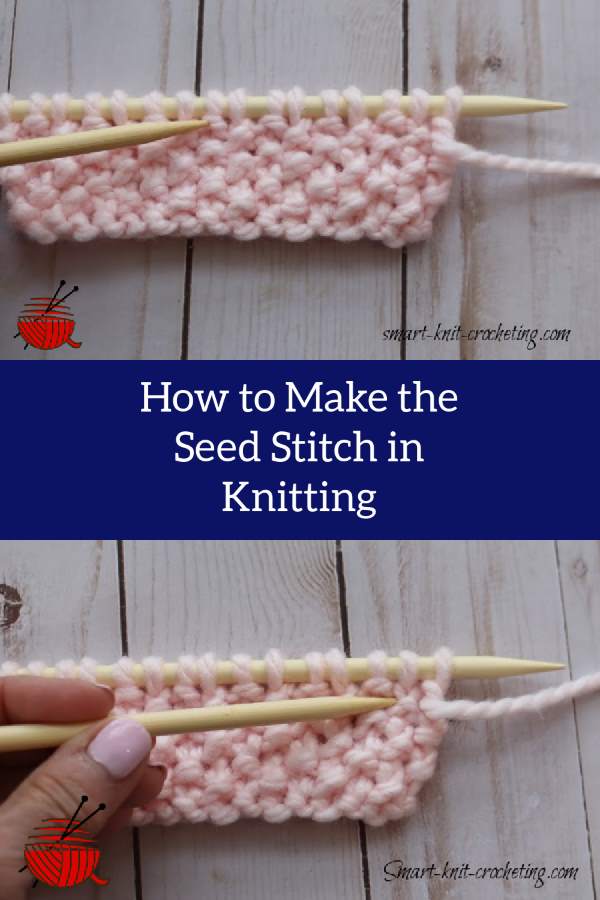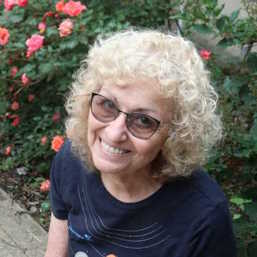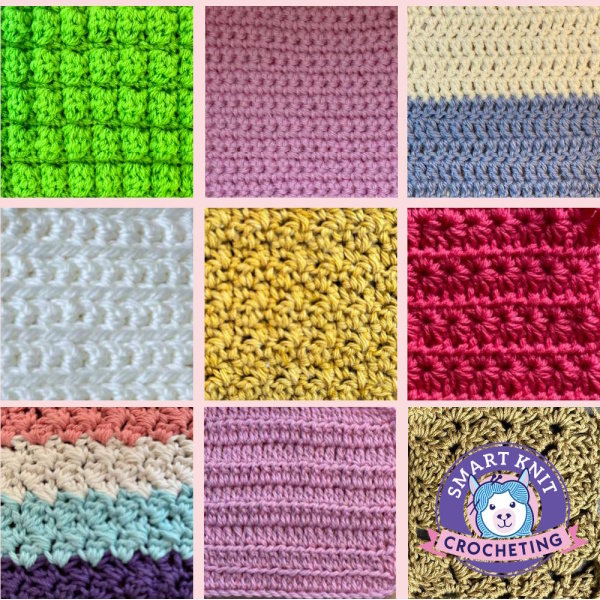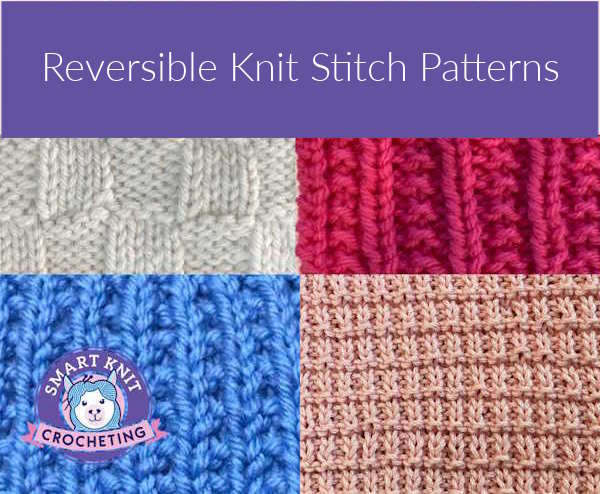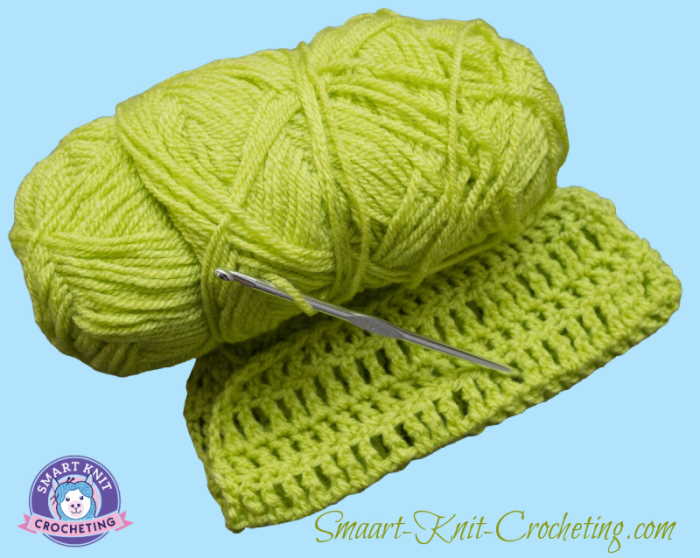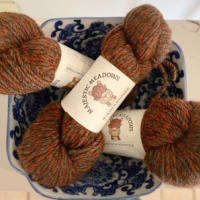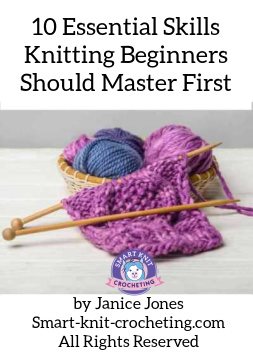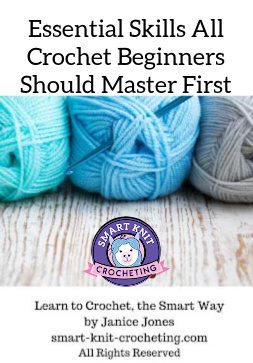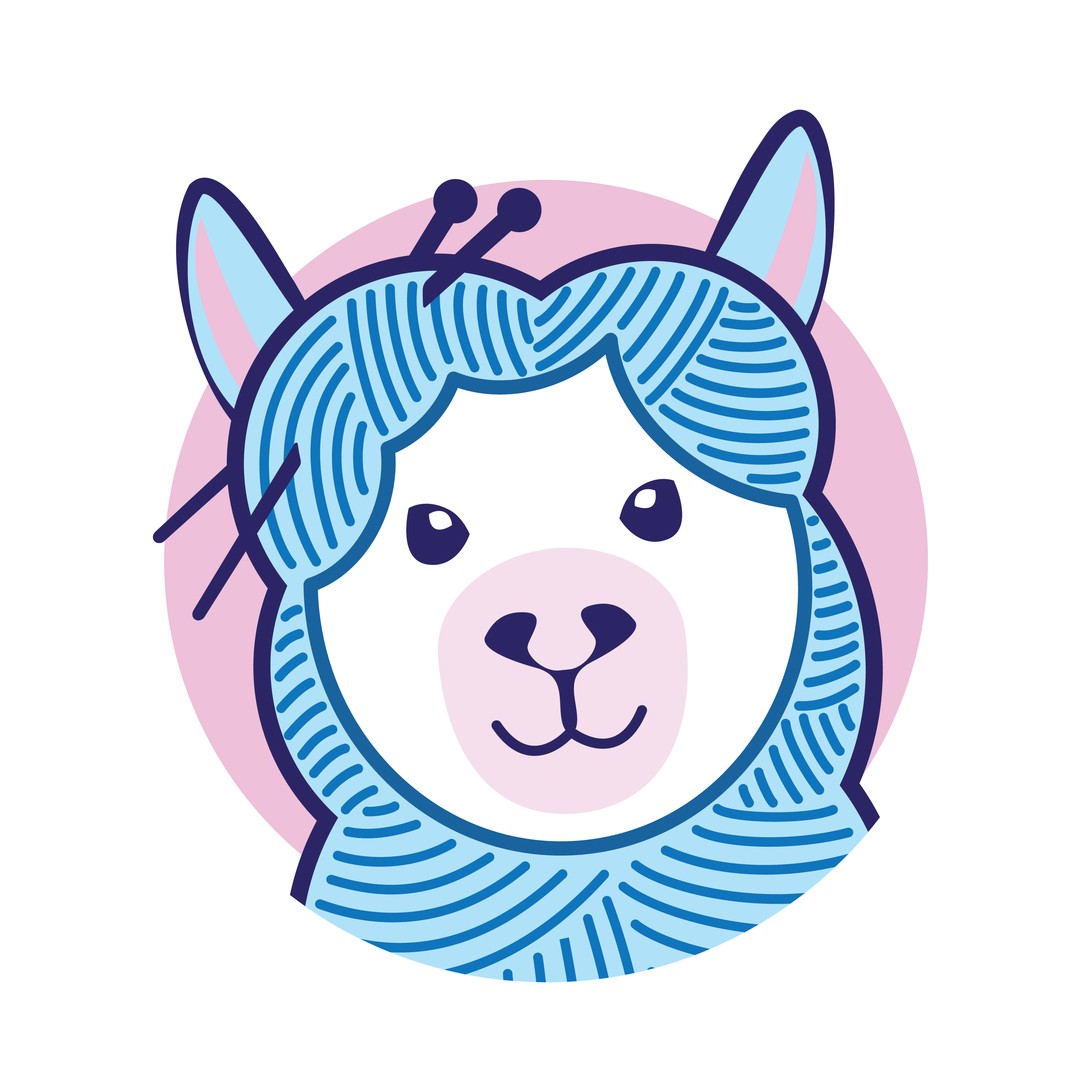- Home
- Knit and Purl Stitches
- Seed Stitch Knitting
Seed Stitch Knitting: Beginner Stitch That is Easy to Learn
Seed Stitch Knitting by Janice Jones, Certified Knitting Instructor |Published 05-08-2023, Updated 10-12-2025
The seed stitch is a lovely textured knit stitch that is very beginner-friendly. It is easy to knit, but not so simple to differentiate between the moss and double moss.
In fact, when I started writing about this stitch, I found at least eight different names for the seed, moss, and double moss stitches, and I found that many were used interchangeably, which, although not intended to be confusing, ended up confusing me. It all depends on where you live.
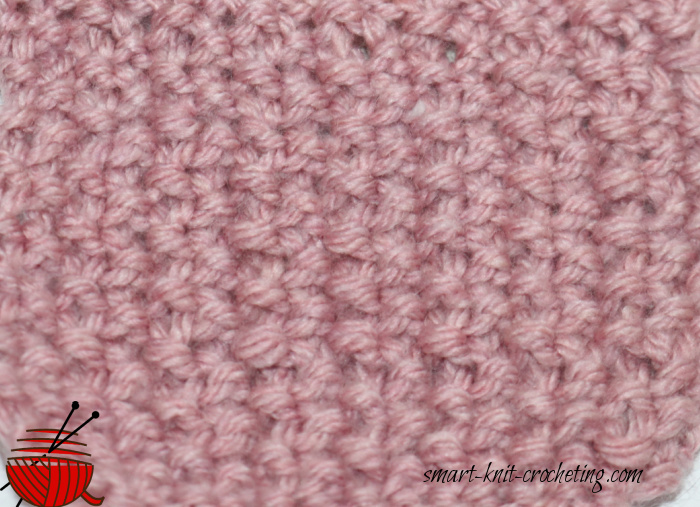 Seed Stitch Knitting
Seed Stitch KnittingWhat is a beginner supposed to do?
Well, I'm in the U.S., and this stitch is called the seed stitch. But you may know it is the moss stitch if you are in the UK or Australia.
Here is where it gets confusing. In the US, the moss stitch is called moss, American Moss, or Double seed.
But in the UK and Australia, this same stitch is called Irish Moss or Double Moss. Have I confused you yet? It gets worse. A third stitch, which is very similar, is called Double Seed or Box stitch in the US. But this stitch is called Double Moss or Box stitch in the UK and Australia.
Since I am in the US, I am calling this stitch tutorial the Seed Stitch.
| U.S. Name | U.K. / Australia Name | Alternate Names / Notes | Description / Repeat Pattern |
|---|---|---|---|
| Seed Stitch | Moss Stitch | Sometimes called “Single Moss Stitch” |
Alternates knit (K) and purl (P) stitches every stitch and every row. Pattern repeat: K1, P1 across; next row, P1, K1 across. |
| Moss Stitch or American Moss | Irish Moss Stitch or Double Moss Stitch | Sometimes called “Double Seed Stitch” in the U.S. |
Two-row (or four-row) repeat creating a denser texture. Typical pattern: K1, P1 for two rows; then P1, K1 for two rows. |
| Double Seed Stitch or Box Stitch | Double Moss Stitch or Box Stitch | Names are often the same, but pattern rows may vary slightly. |
Creates a box-like texture. Typical pattern: K2, P2 for two rows; then P2, K2 for two rows. |
Quick Takeaway for Beginners:
In the U.S., this tutorial’s stitch — Seed Stitch — is the single-row repeat pattern (K1, P1, then opposite on the next row).
In the U.K. and Australia, that exact same stitch is usually called Moss Stitch. The terms Moss, Irish Moss, and Double Seed refer to slightly different multi-row versions.
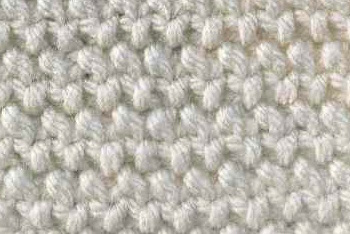 Seed Stitch (US)
Seed Stitch (US)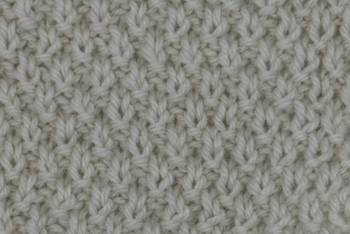 Moss Stitch (US)
Moss Stitch (US)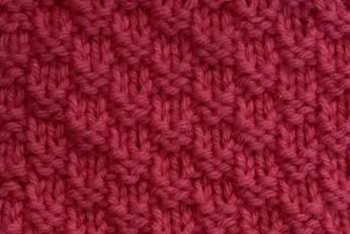 Double Stitch/Box Stitch
Double Stitch/Box Stitch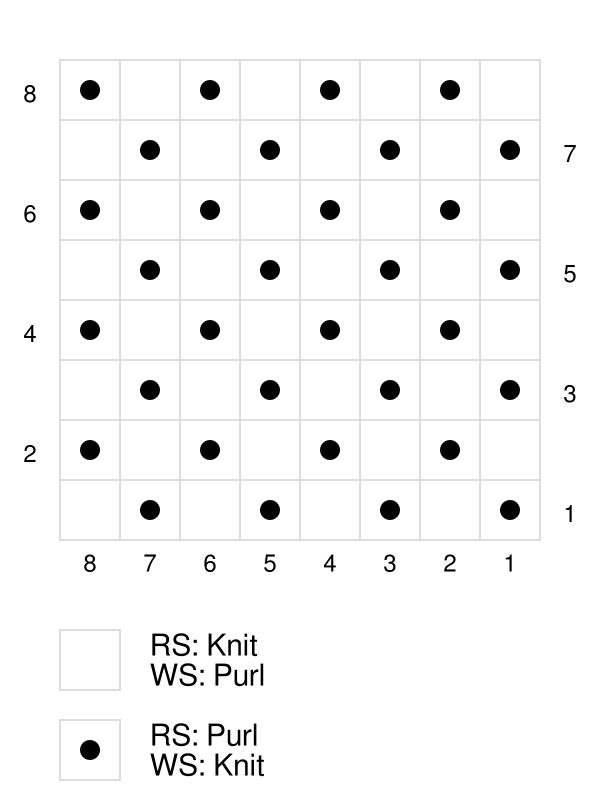 Seed Stitch (US)
Seed Stitch (US)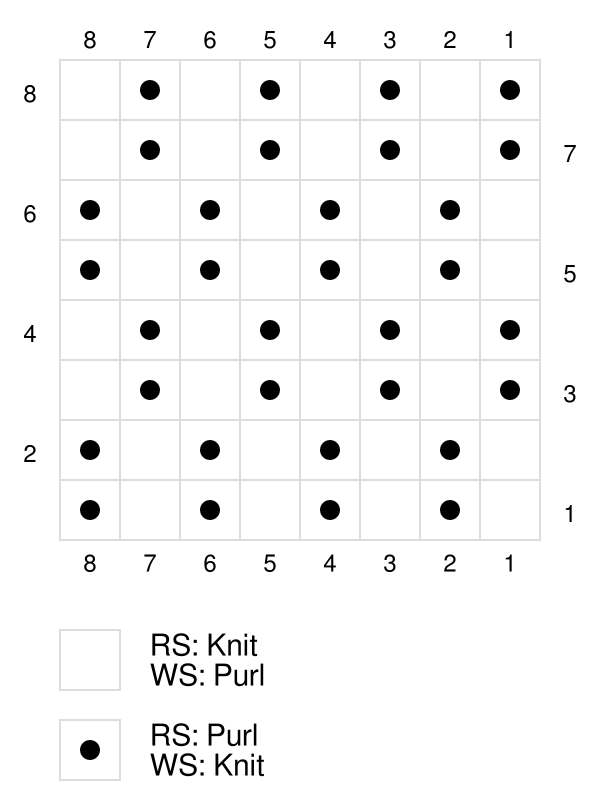 Moss Stitch (US)
Moss Stitch (US)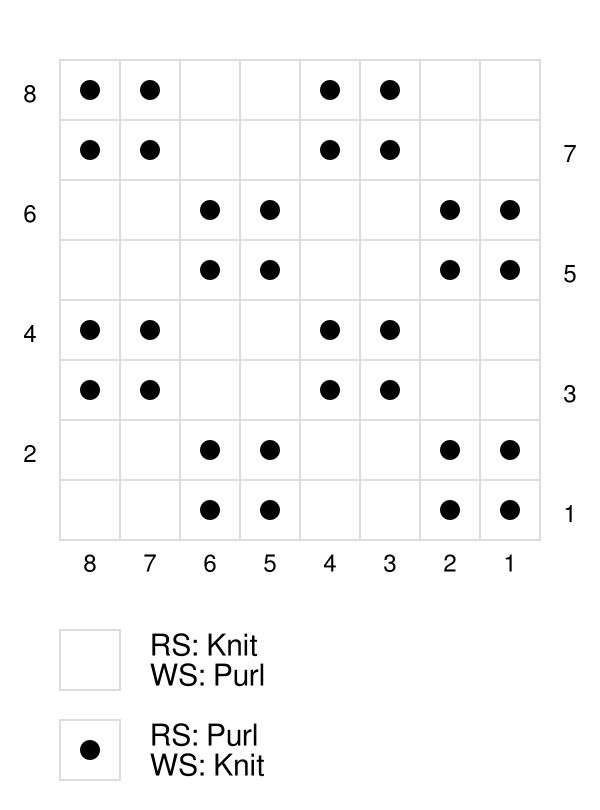 Double Moss or Box Stitch (US)
Double Moss or Box Stitch (US)The Seed Stitch in Knitting
Take a look, this simple textured fabric looks like a bunch of little seeds. It is created by knitting and purling stitches in a very easy pattern and can be created with an even or odd number of stitches.
Skills Needed to Make the Seed Stitch
- To create the Seed Stitch, you will need to be able to:
- How to cast on and bind off
- How to make the Knit Stitch
- How to make the Purl Stitch
- How to read written instructions or knitting instructions in chart form
- Optional: How to weave in ends and how to block finished projects
Abbreviations
These are the abbreviations you might see when following a seed stitch pattern.
K = knit
P = purl
* * = Repeat the instructions within the two asterisks for the number of times indicated in the pattern.
RS = right side
WS = wrong side
CO = Cast on
BO = Bind off
How to Knit the Seed Stitch with an Even Number of Stitches
You can work the seed stitch on basically any number of stitches. The instructions explain how to work on an odd number of stitches versus knitting on an even number of stitches.
Method 1: Working the Seed Stitch on an Even Number of Stitches
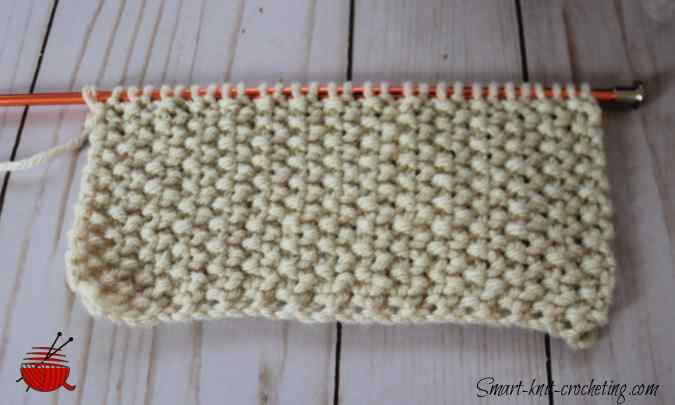
Cast on an Even Number of Stitches
Row 1: *k1, p1; repeat from * to end of row.
Row 2: *p1, k1; repeat from * to end of row.
Work rows 1 to 2 until you reach your desired length. Bind off and weave in ends.
Method 2: Work the Seed Stitch on an Odd Number of Stitches
Cast On: An Odd Number of Stitches
Row 1: (RS) * K1, P1; rep from * to the last stitch, then, K1
Row 2: (WS) K1, * P1, K1; rep from * to end
Work rows 1 and 2 until you reach your desired length. Bind off and Weave in Ends.
What Does the Seed Stitch Pattern Chart Look Like?
Knitting charts come in handy when you begin to make more complicated project. The knitting chart for the seed stitch is an easy way to begin learning how to read a chart.
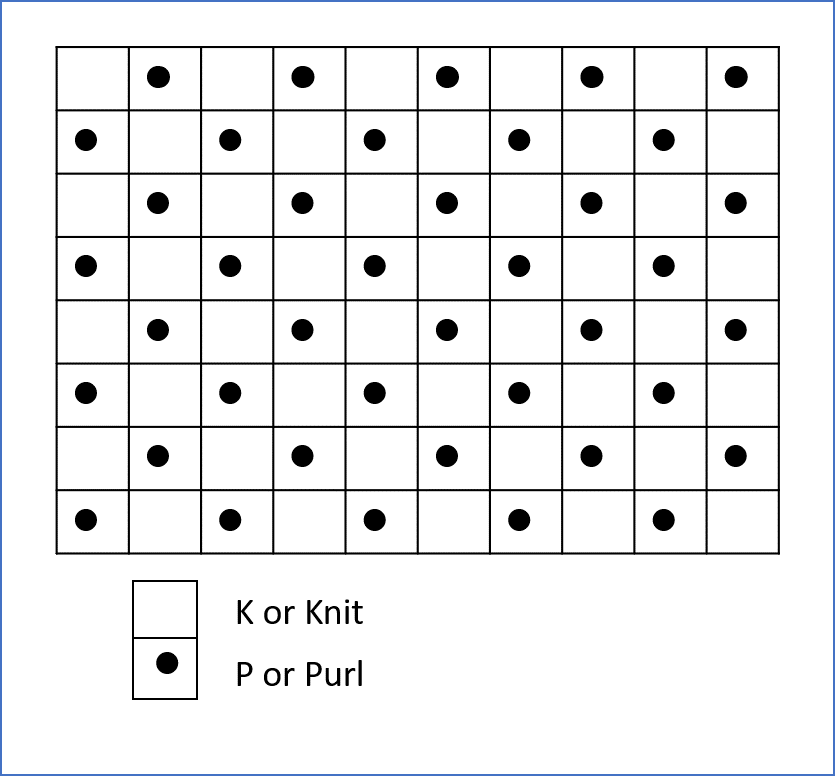 Knitting the Seed Stitch, Pattern Chart
Knitting the Seed Stitch, Pattern ChartCan You Knit the Seed Stitch in the Round with Circular Needles?
Absolutely.
Cast On: An Even Number of Stitches. Place a stitch marker to mark the beginning of the round.
- Round 1: (RS) *K1, P1; rep from * around.
- Round 2: *P1, K1; rep from * to end of round.
Repeat rounds one and two until you reach your desired length.
What Can the Seed Stitch Knitting Be Used For?
The seed stitch is such a versatile stitch. You'll find it used in blanket and scarf patterns, wash cloths, and even sweaters. It also makes a nice edging for projects using the stockinette stitch.
Since it is reversible, you can create any project that calls for both sides to show, such as a scarf.
Knit a Seed Stitch Dishcloth
How to Know When To Knit and Purl a Stitch
You could always either say or think, Knit, Purl, Knit, Purl, but... that gets old very quickly. Knowing what the purl and knit stitches look like helps, so if you get distracted, you will always know what stitch to do next. Let's take a look at what the purl and knit stitches look like in the seed stitch pattern.
The Knit Stitch
In the picture below, the knitting needle is pointing to a knit stitch. When you see this on your left hand needle, you will know that you must purl that stitch.
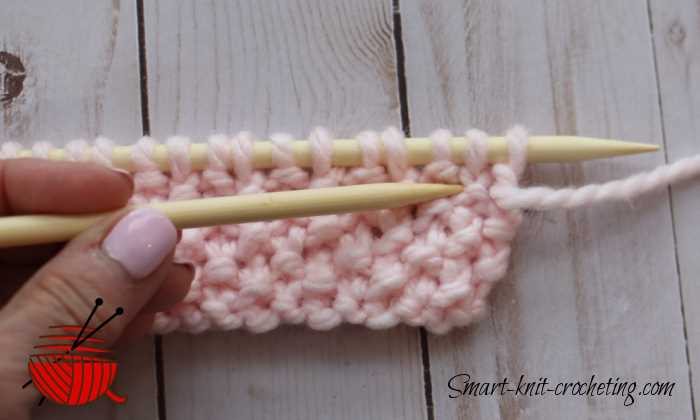 How the Knit Stitch Appears in the Seed Stitch Pattern.
How the Knit Stitch Appears in the Seed Stitch Pattern.The Purl Stitch
In the row you are about to work, the purl stitches are easy to identify. They look like little bumps (or seeds). You will knit each one of these little purl stitches.
 How the Purl Stitch appears in the seed stitch pattern.
How the Purl Stitch appears in the seed stitch pattern.Troubleshooting and Professional Tips
The seed stitch may be one of the easiest, beginner-friendly stitches, but that does not mean that beginners always produce "perfect results." Small mistakes can alter the texture's appearance and feel.
1. The stitch pattern looks like ribbing, not seed stitch
If you always knit the knits and purl the purls, you will create a rib stitch. That is not the seed stitch. Try casting on an odd number of stitches and start each new row with the opposite stitch from the one below, knit the purls and purl the knits.
2. The texture looks uneven or “off”
It takes practice to get the "perfect tension." Inconsistent tension between knit and purl stitches. This usually results in uneven holes between stitches. If you don't maintain the same tension when transitioning from knits to purl stitches, holes can occur. I found that I was able to reduce and eliminate those holes by doing the following:
- Knit the knit stitches normally.
- To create the purl stitches, insert the right needle as if to purl, pull on the working yarn slightly, then make the purl stitch.
- Do that each time you begin to make a purl stitch.
3. It’s hard to tell if the next stitch should be knit or purl
Look for a “bump” on the stitch below: If it is a bump (purl stitch), that means to knit the next stitch. If it resembles a "V" shape, purl the next stitch.
4. The edges look loose or messy
Edge stitches tend to stretch because they don’t have neighboring stitches to anchor them. Keep a slightly tighter tension on the first few stitches and/or last few stitches of each row. Some people suggest slipping the first stitch of every row knitwise to create a neater edge.
5. The stitch count keeps changing
This is a common beginner problem. Accidental yarn overs or dropped stitches can change the stitch count. Double-check your stitch count at the end of each row.
If you notice an extra loop on your needle, you’ve likely wrapped the yarn over unintentionally. If a stitch drops, use a crochet hook to pull it back up, alternating knit and purl as you go.
How to Make the Seed Stitch: Pin for Future Reference
Frequently Asked Questions about the Seed Stitch
Can I work the seed stitch in the round?
Can I work the seed stitch in the round?
Yes, but the repeat changes slightly. In the round, you alternate knit 1, purl 1 on one round, then purl 1, knit 1 on the next round to maintain the texture.
Is the seed stitch reversible?
Is the seed stitch reversible?
One of the defining features of the seed stitch is that it looks the same on both the right and wrong sides of the fabric, perfect for items where both sides are visible.
How many stitches do I cast on for the seed stitch?
How many stitches do I cast on for the seed stitch?
For flat knitting, you can cast on any number of stitches, but follow the slightly different directions for working with an odd or even number of stitches. For working in the round, cast on an even number of stitches.
What kind of yarn works best for the seed stitch?
What kind of yarn works best for the seed stitch?
To see the texture, select a smooth, medium-weight yarn (like cotton or worsted-weight wool). Textured or fuzzy yarns can obscure the delicate pattern of alternating stitches.
Is the seed stitch good for beginners?
Is the seed stitch good for beginners?
Yes! The seed stitch is one of the easiest and most rewarding beginner stitches. It only requires knowing how to knit and purl, making it perfect for practicing tension and stitch transitions.
Is the seed stitch the same as the sand stitch?
Is the seed stitch the same as the sand stitch?
No, the seed stitch and sand stitch are not the same. The seed stitch alternates knit and purl stitches both horizontally and vertically, creating a balanced, reversible texture. The sand stitch has a two-row repeat and produces a slightly nubbier, non-reversible surface.
Conclusion
The seed stitch in knitting is an easy, beginner-friendly knit stitch pattern that is created by alternating knit stitches and purl stitches. It is a good stitch to learn how to read your stitches, and a pattern that can help you learn how to control your tension.
